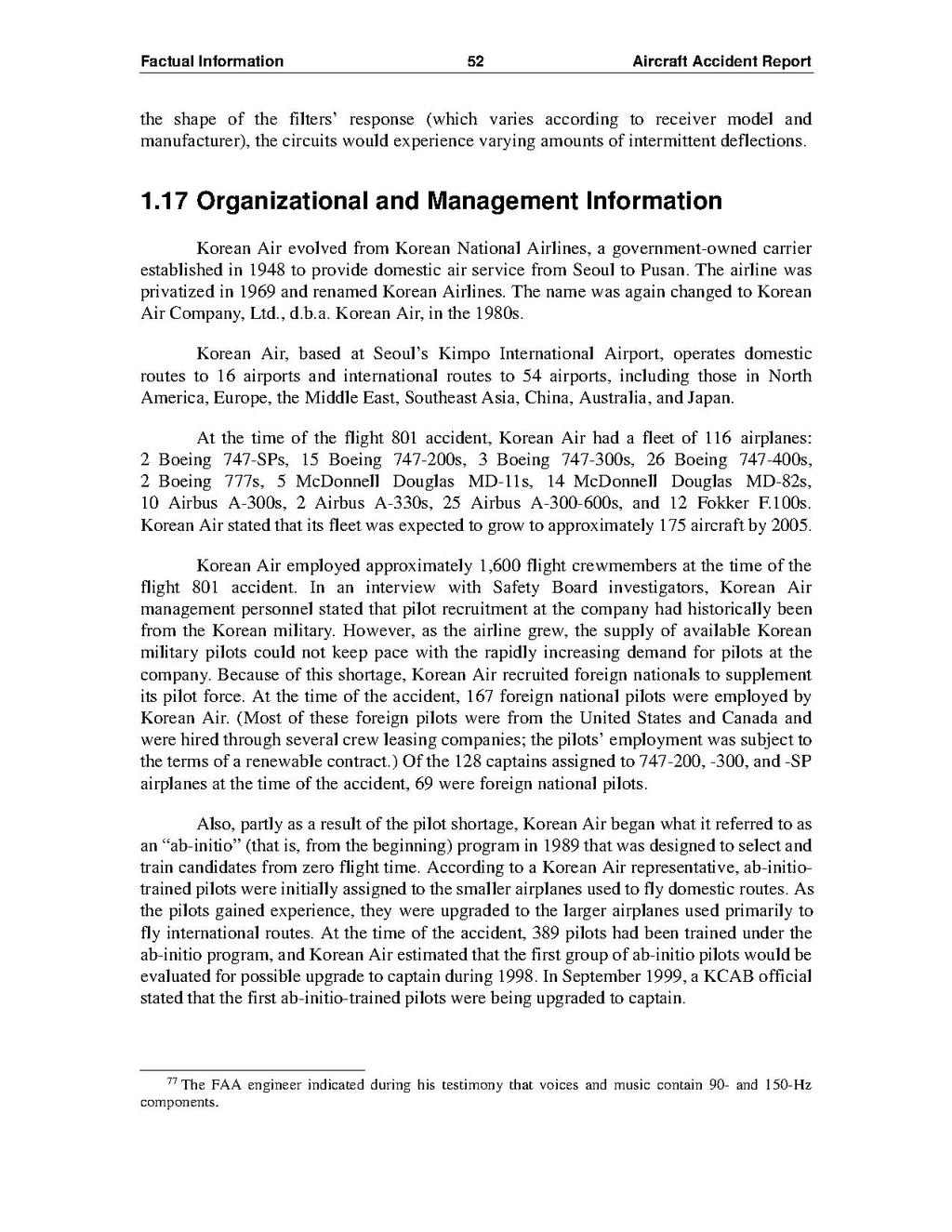the shape of the filters' response (which varies according to receiver model and manufacturer), the circuits would experience varying amounts of intermittent deflections.
1.17 Organizational and Management Information
Korean Air evolved from Korean National Airlines, a government-owned carrier established in 1948 to provide domestic air service from Seoul to Pusan. The airline was privatized in 1969 and renamed Korean Airlines. The name was again changed to Korean Air Company, Ltd., d.b.a. Korean Air, in the 1980s.
Korean Air, based at Seoul's Kimpo International Airport, operates domestic routes to 16 airports and international routes to 54 airports, including those in North America, Europe, the Middle East, Southeast Asia, China, Australia, and Japan.
At the time of the flight 801 accident, Korean Air had a fleet of 116 airplanes: 2 Boeing 747-SPs, 15 Boeing 747-200s, 3 Boeing 747-300s, 26 Boeing 747-400s, 2 Boeing 777s, 5 McDonnell Douglas MD-11s, 14 McDonnell Douglas MD-82s, 10 Airbus A-300s, 2 Airbus A-330s, 25 Airbus A-300-600s, and 12 Fokker F.100s. Korean Air stated that its fleet was expected to grow to approximately 175 aircraft by 2005. Korean Air employed approximately 1,600 flight crewmembers at the time of the flight 801 accident. In an interview with Safety Board investigators, Korean Air management personnel stated that pilot recruitment at the company had historically been from the Korean military. However, as the airline grew, the supply of available Korean military pilots could not keep pace with the rapidly increasing demand for pilots at the company. Because of this shortage, Korean Air recruited foreign nationals to supplement its pilot force. At the time of the accident, 167 foreign national pilots were employed by Korean Air. (Most of these foreign pilots were from the United States and Canada and were hired through several crew leasing companies; the pilots' employment was subject to the terms of a renewable contract.) Of the 128 captains assigned to 747-200, -300, and -SP airplanes at the time of the accident, 69 were foreign national pilots. Also, partly as a result of the pilot shortage, Korean Air began what it referred to as an "ab-initio" (that is, from the beginning) program in 1989 that was designed to select and train candidates from zero flight time. According to a Korean Air representative, ab-initiotrained pilots were initially assigned to the smaller airplanes used to fly domestic routes. As the pilots gained experience, they were upgraded to the larger airplanes used primarily to fly international routes. At the time of the accident, 389 pilots had been trained under the ab-initio program, and Korean Air estimated that the first group of ab-initio pilots would be evaluated for possible upgrade to captain during 1998. In September 1999, a KCAB official stated that the first ab-initio-trained pilots were being upgraded to captain.
